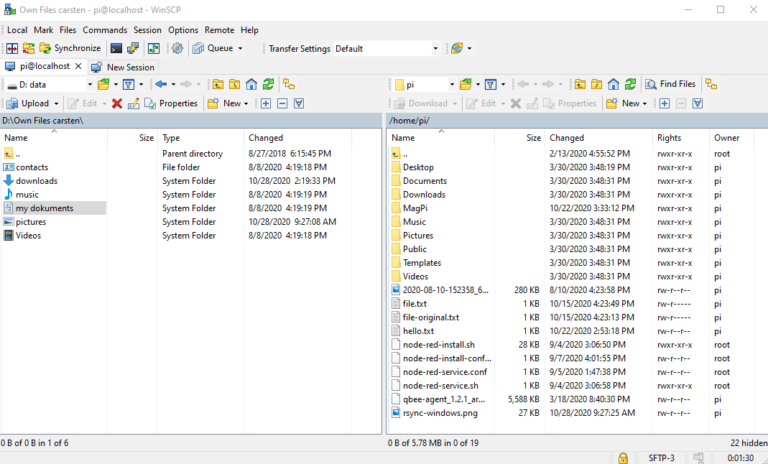We briefly touched the topic of remote file access before but we still get a lot of questions like “How can I access files on a remote Linux device behind a firewall?” or “What can I do if I want to copy files from a device that is not in my local network?”. In this short summary we want to give you quick answers how you can easily read and write files achieving full remote file access on any embedded Linux device across any network. This works even if a device is behind a firewall or NAT.
How can I access files remotely on a Linux device behind a firewall?
In essence we do the same thing you would do in a local network using scp or rsync. The only difference being that we use qbee.io to create a secure VPN between the remote device and your local machine. So just install qbee.io on your remote devices and qbee-connect on your desktop machine. This works for all OS (Linux, macOS and Windows). Please see our documentation for more information. Then you can use the built-in capabilities of ssh to achieve remote file access.
How to read or write from a remote file system:
These are different ways of accessing files remotely across a firewall or network:
- use the built-in web ssh terminal of qbee to do a remote ssh login through the web application. Alternatively, start a terminal session with qbee-connect on your local machine. This is simple, secure and quick, especially through the browser but might not offer the convenience you want.
- use
scpfor doing a secure remote two-way file access as described in this guide. This has the advantage that files can easily be uploaded or downloaded according to need. So you can both read and write files to the remote embedded Linux device. rsyncis a tool for remote two-way synchronisation. It works on files and folders. How to use this is described here.rsynchas some advantages. It has built-in compression and you can sync whole folders. In later operations only the differences are transmitted reducing bandwidth. We recommend this method if you want an identical, synchronised copy of folders or files on a local machine.- if you want to browse files and file systems remotely without downloading everything then
sshfsis the tool of choice as described here.sshfsmounts a remote file system from the remote device into your local machine. This allows you to browse the file system of the remote Linux device locally. If a file of interest is located it can be opened on the local machine. Many customers are astonished by the convenience of this method.
Here is a list of tools to use to achieve this. The list is not complete:
- WinSCP : Windows (
SCP,SFTP) - FileZilla : ALL (
SFTP) - Cyberduck : MAC (
SFTP) - SSHFS-Win : Windows (
SSHFS) - SSHFS-FUSE : MAC (
SSHFS) - Grsync : ALL (
rsync) - Acrosync : ALL (
rsync), commercial
So yes, using a smart remote access tool like qbee it is possible to read and write remote Linux file systems even behind a firewall. All these solutions are convenient and secure and the best solution for you is determined if you want to browse files, synchronise files and folders or do a simple copy operation.

Just sign up for our free 30 day qbee trial and explore the opportunities.







